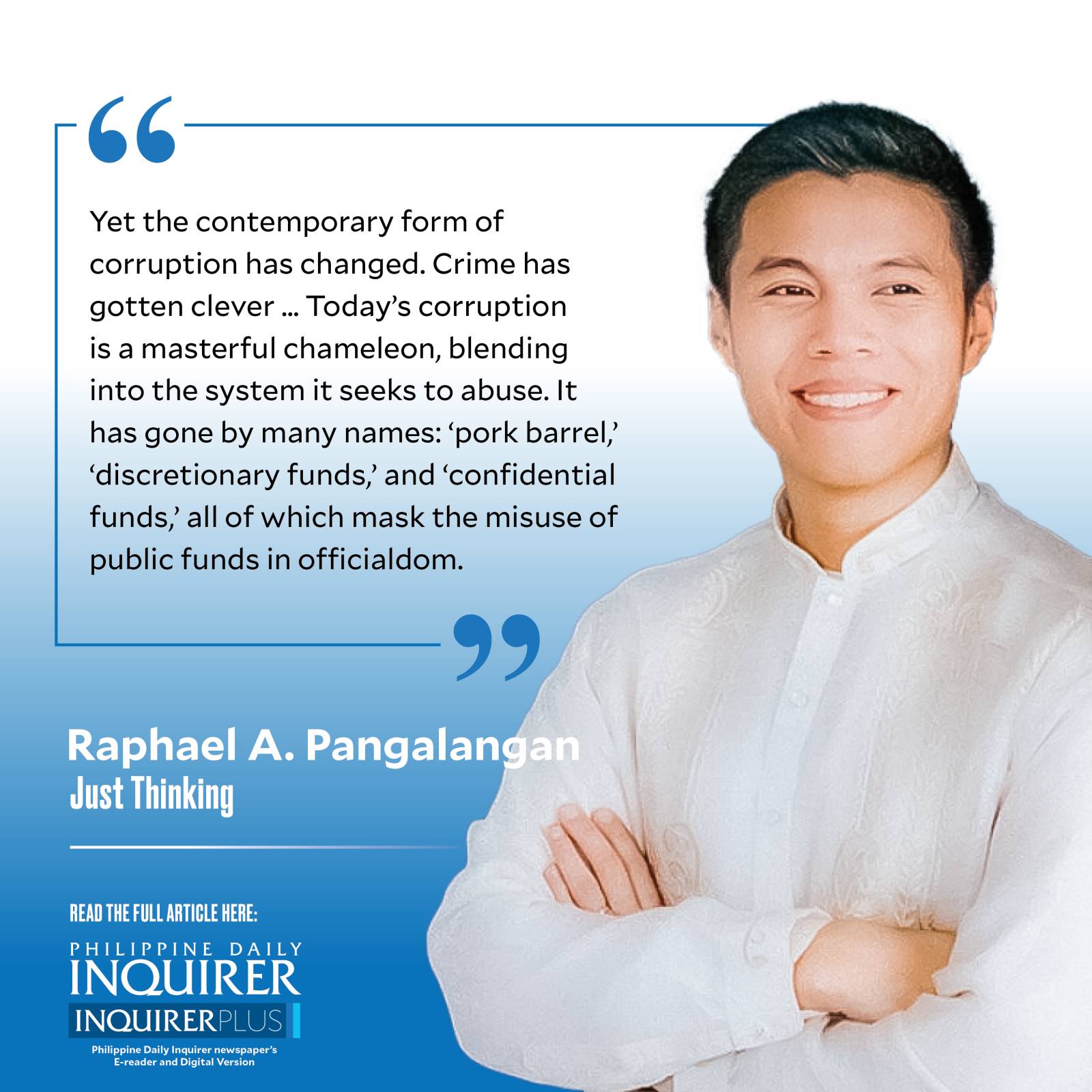The art of corruption: Logos and lessons

In the realm of artistic expression, creativity takes center stage and innovation commands a standing ovation. Yet we cannot be blinded by artistry’s vibrant strokes. Even the canvas can be a covert arena where both creativity and corruption find their place.
Take for example the recent predicament of the Kunsten Museum of Modern Art in Aalborg, Denmark. The Danish museum had contracted artist Jens Haaning to reprise a previous artwork which commentated on wage gaps between Denmark and Austria. Haaning was handed $84,000 by a Danish museum to create the modern art, yet the outcome was, suffice it to say, unconventional—and not necessarily from the perspective of the avant-garde.
Article continues after this advertisementIn due time, Haaning submitted his artwork which, to the museum’s surprise, was an artistic void. A blank canvas aptly dubbed by its creator: “Take the Money and Run.”
Now, it’s not the intention of this discussion to don a critic’s hat and ascertain whether Haaning’s empty canvas qualifies as a masterpiece or misdemeanor. The Danish museum itself, after a bemused pause, threatened legal action but also decided to embrace the unexpected, exhibiting this enigmatic piece under the collection “Work It Out,” an exploration of humankind’s intricate relationship with labor. It seems that in commissioning this piece, the museum unwittingly embroiled itself in a conversation about its own relationship with its artists.
This incident shines a spotlight on the multifaceted value of art, both artistically and monetarily—a dualism that Philippine government officials are becoming increasingly acquainted with.
Article continues after this advertisementCorruption was once closely tied to dictatorial might. During the Ferdinand Marcos Sr. rule, power translated into personal gain. The Philippine National Bank was coopted like a “personal piggy bank.” Marcos’ closest allies were gifted with expensive watches and collectively dubbed the “Rolex 12.” Yet the contemporary form of corruption has changed. Crime has gotten clever. Today, there is sophistication even in sin. Today’s corruption is a masterful chameleon, blending into the system it seeks to abuse. It has gone by many names: “pork barrel,” “discretionary funds,” and “confidential funds,” all of which mask the misuse of public funds in officialdom.
Perhaps soon we may even add “wealth fund” to that list. The emergence of the Maharlika Investment Fund typifies that added layer of sophisticated subversion. While the economic model is sound and there are hopes that it works as it should, there is also the bleak reality of enforcement gaps, kick-back culture, and a history of kleptocracy that we cannot ignore. Hurdles are so systemic that they cannot simply be done away with optimism and well-wishes.
Corruption isn’t a one-dimensional act of greed. It is an intricate choreography that requires cunning, manipulation, and bureaucratic acrobatics. And in this intricate dance of deception, art emerges as an unwitting partner in crime. A veil for modern corruption to hide behind. The opacity of the art market is where corruption finds its solace.
We’ve seen art in action through the recent logo debacle of Philippine government offices. “Rebranding” which left much to be desired. Critics argue that the new logos lack aesthetic appeal, and worryingly incur a negative return on investment given their hefty price tags. Amidst poverty, hunger, and Maslowian need, millions upon millions were wasted on kindergarten art.
The inherent subjectivity of art creates an ideal breeding ground for corruption, as its very nature allows for a wide range of interpretations and, thus, valuations. Who’s to say these logos were worth pesos of pennies? It is precisely this malleability of perception that is exploited to hide financial mismanagement. A place for graft under the guise of artistic expression. As we have seen, government logos shed light and lessons for the fight against corruption.
When a mere picture of a lackadaisical “Bored Ape” can command $2.7 million, the millions poured into these logos are worth every centavo with their weight in gold. So long as beauty is in the eye of the beholder, then the art of corruption will be more than happy to pay.
They say something’s worth is what someone is willing to pay for it. Well in that case, “willingness to pay” goes from economic principle to favored excused. Behind the mask of subjectivity, art is the government’s favored excuse to avoid account. It is the new face of corruption.
—————-
thinkjustly@gmail.com
















